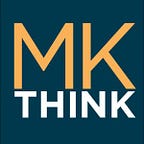Architecture & Enterprise: Potential & Pitfalls
by Mark Miller, FAIA | LEEDap | CEO
The Entrepreneurial Accident
Our great architect-as-entrepreneur experiment started out by accident. The genesis of Project FROG, arguably the nations leading clean modular building technology arose from a desire for a bit of PR. In 2005 we met with the publishers at Metropolis Magazine regarding our firm’s work and its suitability for representation in a trendy, high profile issue focused on education. The increasingly glazed look of the editor indicated that my pitch (for a story about what I thought were the most exciting architectural projects the world needed to know about) was not working. Confirmed by the tone of her “Got anything else?,” I knew I was running low on options. I responded with, “There is a more confidential assignment that we are working on…but it has never been shared.” The editor looked up and leaned forward. “We have been working on the problem of 300,000 classrooms in the US, and we have a prototype that looks like this,” sketched furiously on a hotel stationary pad” She was in. Granting us good coverage if we published with them first, our ideas would be published. The only problem was that we had no images, only basic research and a bit of brainstorming over beers on a Friday. We had 30 days before the reporter, under deadline, was to visit our office.
The article resulted in attention and inquiry from around the world. We were excited. We dodged, bought time, researched and sketched more. The New York City 2012 Olympic Committee called. We sketched a bit more. Then came the tsunami in Indonesia followed a few months later by Katrina. We realized that we were in the center of a global problem with no viable solution.
From Concept to Company
In 2006, we realized that we were well out of our safe range. Fortunately we reached out for technological and business advice. On the technology front, our saving grace was the connection with two brilliant Silicon Valley talents: Manley Tantuico, an industrial designer, and Bekir Begovic, a metal fabricator. After they recovered from their amusement at our overly complex architectural approach, they patiently explained the obvious benefits of an industrial design approach: Strive for a clean, simple and repeatable solution made of as few distinct parts as possible. Then organize the product into pieces, parts, components and assemblies. Though obvious to an industrial designer, this was revolutionary to us. Soon to follow was the introduction to relevant software tools that support this methodology.
Financially, we found ourselves in even more foreign territory. The problem, that is the market we were addressing, was large. We had a mission driven by the passion of some very talented creative minds. We had the financial capabilities of a modest-sized, first generation architecture firm. So we did what came naturally to us; we sold units. Within a few weeks we had two big contracts to build two campuses using our system. The problem was that we had quite a few product elements to finish, very tight project schedules, and understanding, yet demanding clients.
We were able to capitalize a new company through a seed funding round of investment capital from a close network of friends, family and associates. We recruited a very small business team and survived the completion of the first round of contracts. We hung on, and were able to raise a large round of funding from Rockport Capital Partners, a Boston and Sand Hill venture capital firm, just as the fall of Lehman Bros marked the country’s decent into recession.
I awoke to find myself the CEO of a venture-capital-backed company. The real estate market was collapsing, and we needed to get down to the business of creating project confidence and acting like a proper growth-oriented commercial enterprise. My vocabulary had to quickly expand beyond the realm of building to include vernacular like liquidation preferences, option pools, exit strategies, pipeline, venture debt, and optics. I had to take a Myers-Briggs tests, have key-man insurance, and watch legal fees approach 10% of our annual spending.
We were in a brave new world but the achievements were compelling, and the enthusiasm of the staff was motivating. Our belief was that we could change the way buildings were built. Energy consumption would drop 40%. Projects could be completed in weeks and months, not years. Schools would be healthier, providing environments that would support and stimulate the brain’s ability to retain and process knowledge. Our team began achieving these goals.
Crissy Field Center (San Francisco), the Watkinson School (Hartford, Connecticut) and Jacoby Creek (Arcadia, California) demonstrated this vision though the first generation of post VC funding solutions.
As the company grew, so did the issues. The investors determined that growth would be best managed by a professionally trained business team so a new CEO was brought in to manage the growth and expand the funding. I began a transition out of operating and actively engaging with Project FROG and returned to the leadership team at MKThink.
Originally published at www.mkthink.com on October 10, 2011.
